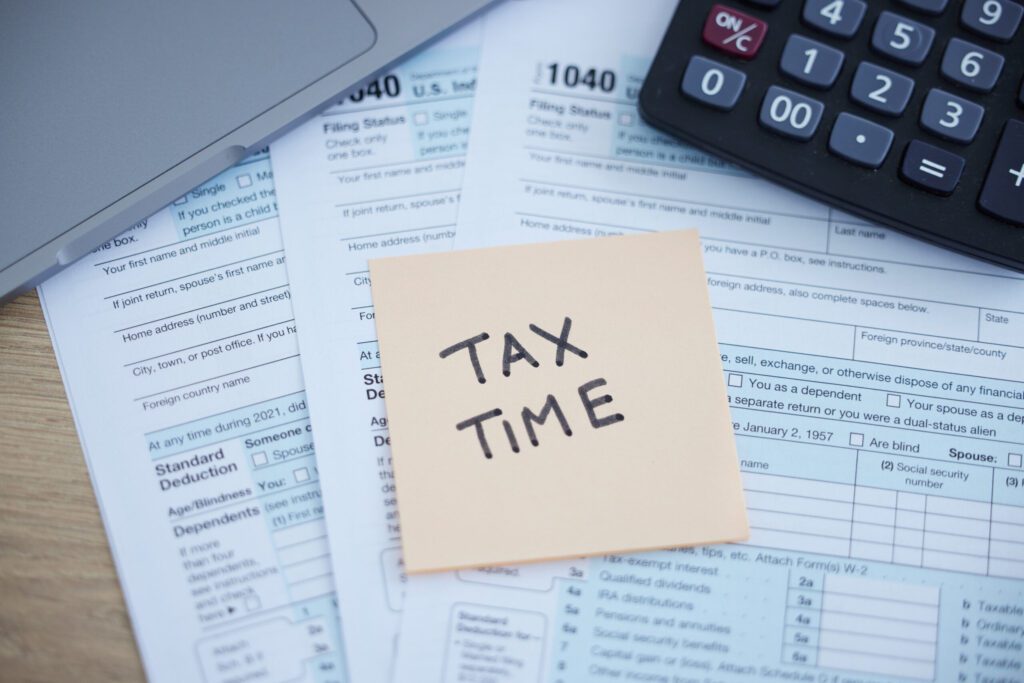Business insolvency – or corporate insolvency – has been making headlines in Canada this month given the shocking statistics that reveal that business insolvencies shot up by more than 41% last year, as pandemic debts mount. But what exactly is a business insolvency? And why is it a concern for many businesses operating in Canada, each requiring a nuanced understanding of the country’s financial landscape and regulatory framework. In this article, we explore what a business insolvency actually means in Canada, its causes, and practical insights for Canadian businesses to avoid insolvency and financial turmoil.
What is business insolvency?
In Canada, business insolvency occurs when a company is unable to meet its financial obligations and pay its debts as they become due. It is also when the sale of the business’ assets are insufficient to pay all of its obligations. The country’s legal system provides specific frameworks, such as the Bankruptcy and Insolvency Act (BIA) and the Companies’ Creditors Arrangement Act (CCAA), to address insolvency issues and facilitate the restructuring of financially distressed businesses. When a business in Canada faces insolvency or financial distress, one of the debt relief options available is corporate bankruptcy – either voluntary or involuntary. Yet bankruptcy is not the only solution by any means. The earlier a business owner can seek advice from a reputable Licensed Insolvency Trustee, the more options that may be available.
What are the causes of business insolvency in Canada?
Here are some of the most common causes of business insolvency in Canada:
- Cash flow management challenges – businesses that face inadequate cash flow management, including delays in accounts receivable and challenges in monitoring operational expenses, can contribute to insolvency.
- Excessive debt – Canadian businesses grappling with high levels of debt, especially in the face of economic downturns, might find it challenging to meet their financial obligations on time.
- Economic uncertainties – economic fluctuations and uncertainties are part of life, and can impact businesses by affecting demand, pricing, and overall market conditions.
- Failure to adapt to regulatory changes – an inability to adapt to evolving regulatory requirements, tax changes, or shifts in government policies can pose risks to a company’s financial stability.
- Cost of living – the increasing cost of groceries, rent, vehicles, and utilities does not just impact consumer insolvencies, but also businesses. Wages are affecting the increase in business insolvencies as employees are asking for better salaries and businesses struggle to balance the increases.
- CEBA deadline – as the CEBA loan deadline has been and gone (January 18, 2024), and no further extensions, further strain has been placed on many Canadian businesses to repay hefty sums of money along with the pressure of a deadline.
How to avoid business insolvency
Given the many challenges businesses in Canada are facing right now, and a steady increase in the amount of business insolvencies being filed, you are likely wondering how best to avoid business insolvency. Here are some tips.
- Strategic financial planning – by implementing rigorous financial planning practices, including regular budget reviews, forecasting, and scenario analysis, businesses can better navigate the economic uncertainties that Canada is facing.
- Debt restructuring and consolidation – Canadian businesses facing debt challenges should explore their debt relief options, as well as debt consolidation strategies in order to manage their liabilities effectively. For some, corporate bankruptcy is an effective option whereby a Licensed Insolvency Trustee offers consultancy and helps to administer a fresh financial future.
- Legal framework compliance – it is so important to ensure compliance with Canadian insolvency laws, including understanding the processes outlined in the Bankruptcy and Insolvency Act to facilitate a smooth resolution in case of financial distress.
- Diversification of revenue streams – diversifying your business’ revenue streams reduces your reliance on specific markets or clients, enabling businesses to better withstand economic downturns.
- Government Assistance Programs – you should stay informed of government assistance programs in Canada, particularly during economic crises, to leverage the available support for businesses facing financial difficulties. Over the years, we have seen the likes of CEBA and CERB, the Government of Canada’s response to the COVID-19 pandemic.
- Professional advice and support – if you are concerned about facing business insolvency, engage an experienced Licensed Insolvency Trustee that is familiar with Canadian insolvency for tailored guidance that is compliant with the relevant regulations.
Business insolvency – FAQs
Here are some of the most commonly asked questions about business insolvency in Canada.
What are the rules for insolvency in Canada?
In Canada, business insolvency is governed by specific rules and legislation designed to provide a framework for the resolution of financial challenges faced by companies. The two primary statutes that outline the rules for business insolvency in Canada are the Bankruptcy and Insolvency Act (BIA) and the Companies’ Creditors Arrangement Act (CCAA):
- Bankruptcy and Insolvency Act (BIA) – sets out the rules and procedures for businesses and individuals dealing with insolvency and bankruptcy in Canada.
- Companies’ Creditors Arrangement Act (CCAA) – the CCAA is another federal statute that specifically addresses the restructuring of large corporations and businesses facing financial difficulties.
- Super-Priority for Debtor-in-Possession (DIP) Financing – both the BIA and CCAA provide for super-priority status for debtor-in-possession (DIP) financing. This allows a company in financial distress to secure new financing that takes priority over existing debts, facilitating the restructuring process.
- Stay of proceedings – upon the filing of a proposal under the BIA or an initial application under the CCAA, an automatic stay of proceedings is triggered. This prevents creditors from taking legal action to collect debts during the restructuring process, providing the company with a temporary reprieve.
Understanding and adhering to these rules and statutes is crucial for businesses navigating insolvency in Canada. Engaging a Licensed Insolvency Trustee is necessary to ensure compliance and navigate the complexities of the restructuring or bankruptcy process effectively.
How does insolvency work in Canada?
In Canada, business insolvency is governed by the Bankruptcy and Insolvency Act (BIA) and the Companies’ Creditors Arrangement Act (CCAA). When a business faces financial distress, it may opt for a formal proposal under the BIA, allowing it to negotiate a plan for debt repayment or restructuring with creditors. The filing triggers an automatic stay of proceedings, providing a temporary reprieve from creditor actions. If a viable proposal is unattainable, the business may declare bankruptcy, leading to asset liquidation and distribution among creditors. Larger corporations may choose the CCAA, initiating a court-supervised restructuring process. Creditor committees may be formed, and the proposed plan requires court approval. Throughout the process, a Licensed Insolvency Trustee oversees proceedings to ensure compliance.
How long does insolvency last in Canada?
The time taken for business insolvency proceedings in Canada can vary widely and is influenced by factors such as the complexity of the case, the chosen avenue for resolution (BIA or CCAA), and the efficiency of the restructuring process. Here are some general timelines for the two primary insolvency options in Canada:
- Bankruptcy and Insolvency Act (BIA):
- Filing a proposal: when a business files a proposal under the BIA, it typically has a maximum of 6 months to negotiate and obtain creditor approval for the proposal. However, this period can be extended with the consent of creditors or the court.
- Bankruptcy proceedings: if a viable proposal is not reached and the business declares bankruptcy, the bankruptcy process may take several months to complete. The distribution of assets to creditors occurs during this period.
- Companies’ Creditors Arrangement Act (CCAA):
- Initial application: for larger corporations opting for the CCAA, the initial application triggers a stay of proceedings, allowing the company to develop a plan for restructuring. The court supervises this process.
- Restructuring process: the restructuring process under the CCAA can extend over a year, especially for complex cases. The court may grant extensions as needed, depending on the circumstances and progress made.
It is important to note that these timelines are approximate, and the actual duration can vary based on the specifics of each case. Additionally, the involvement of creditor committees, negotiations, court approvals, and other factors can influence the overall timeframe. The goal of business insolvency proceedings is to reach a fair and effective resolution, whether through restructuring, a successful proposal, or bankruptcy, and the timeline may be adjusted to accommodate the complexities involved in achieving this outcome. Engaging with an experienced Licensed Insolvency Trustee can help your business to navigate the insolvency process efficiently.
Does insolvency write off debt?
Business insolvency in Canada, whether through the Bankruptcy and Insolvency Act (BIA) or the Companies’ Creditors Arrangement Act (CCAA), does not automatically write off debt. Instead, it provides a structured process for debt restructuring or orderly asset distribution to creditors. The outcome depends on the creditor approval of proposed plans, with secured creditors having priority in asset distribution. Certain types of debts may not be discharged, and personal liabilities or guarantees may exist even after the business insolvency process. The primary goal is a fair and legal resolution of financial challenges, rather than an outright debt write-off.
Business insolvency can happen for various reasons, from poor management to major changes within an industry, or an economic downturn. When a company is facing insolvency, it is important to reach out to a Licensed Insolvency Trustee immediately to discuss the available options. The earlier you reach out, the more options there will be. To mitigate risks and seek professional advice, book a free consultation with a reputable Licensed Insolvency Trustee at Spergel, the ‘get rid of debt’ people.



















